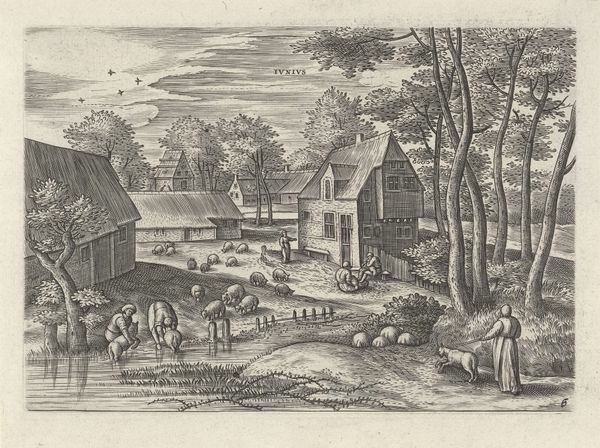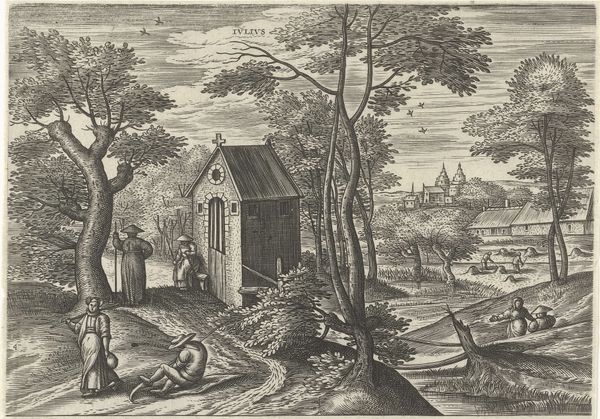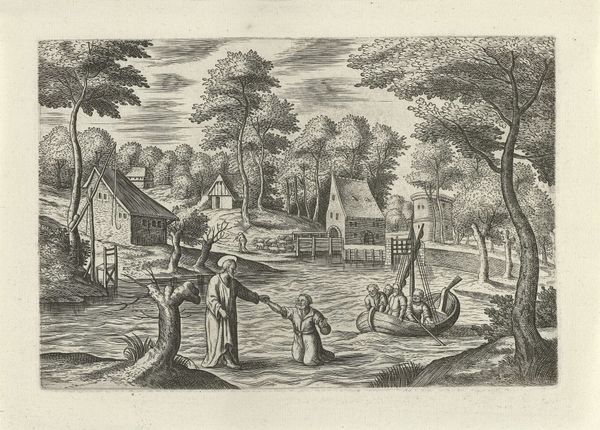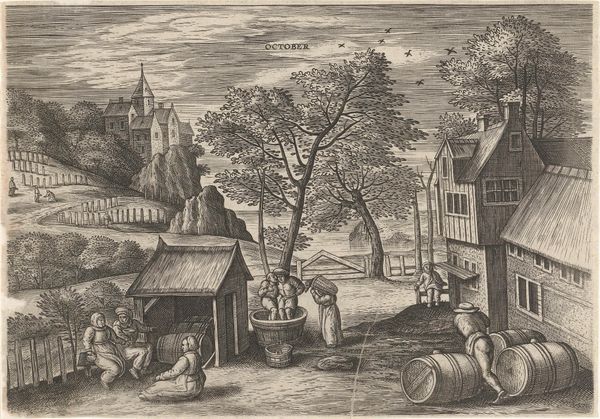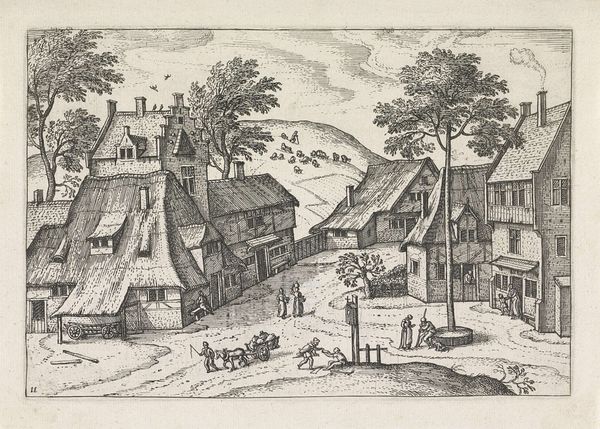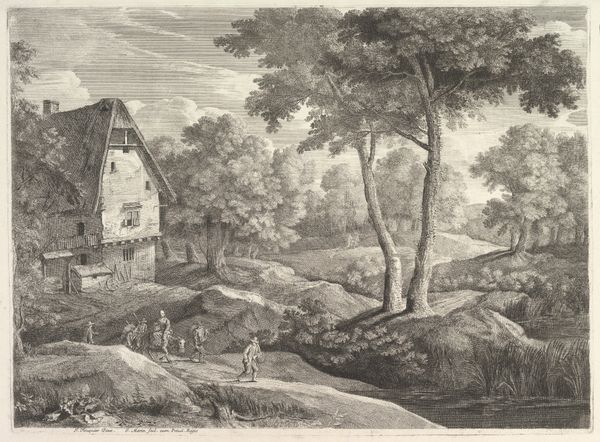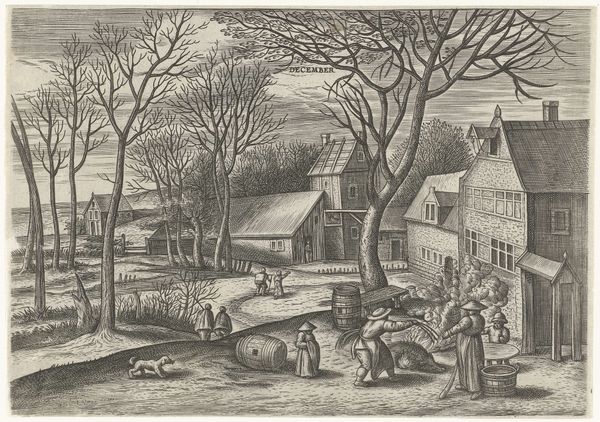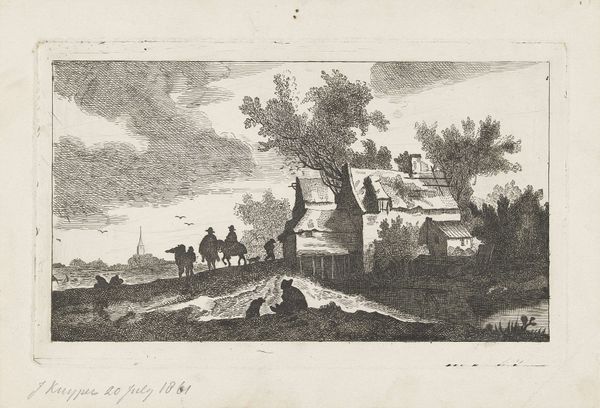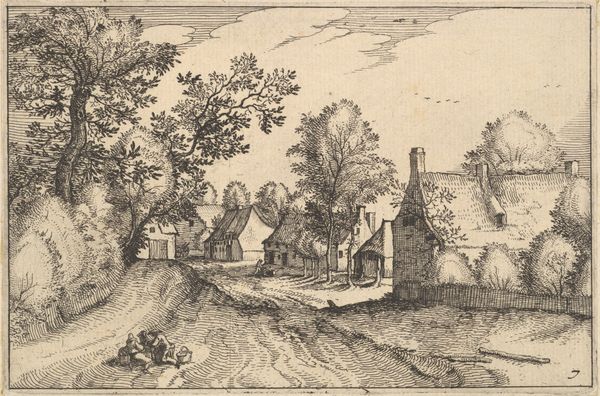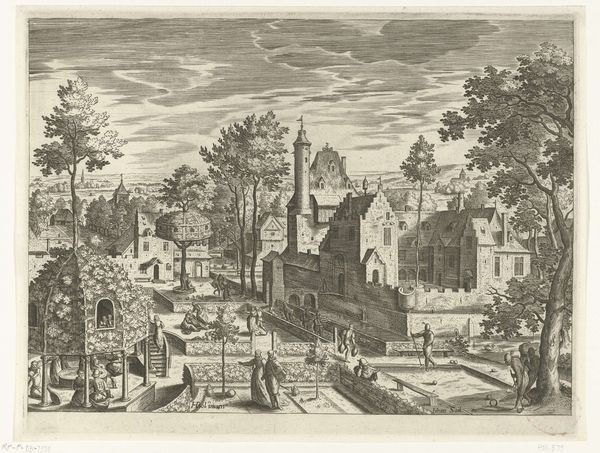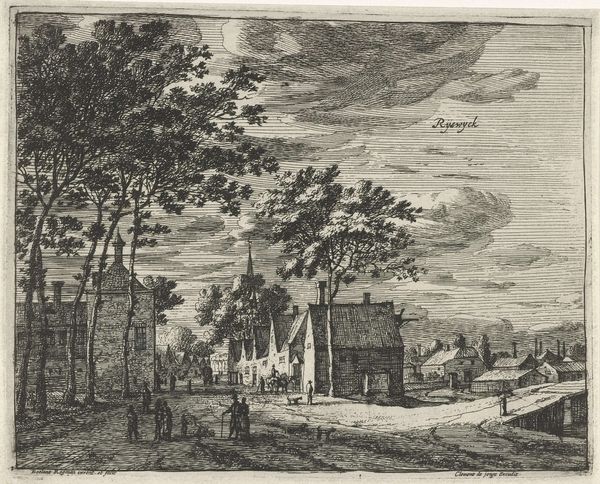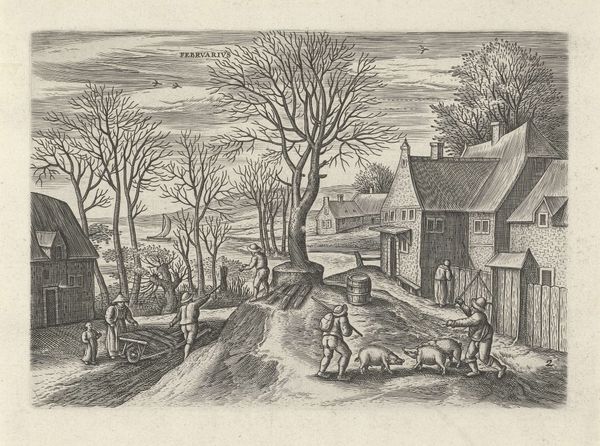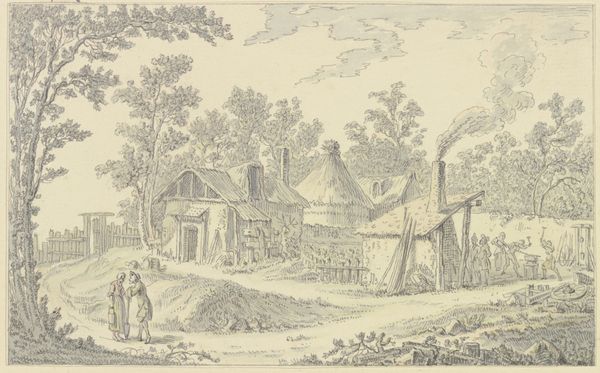
print, engraving
# print
#
old engraving style
#
landscape
#
genre-painting
#
northern-renaissance
#
engraving
#
realism
Dimensions: width 165 mm, height 116 mm
Copyright: Rijks Museum: Open Domain
Editor: Here we have Julius Goltzius' engraving, "September," created sometime between 1560 and 1652. It's a detailed scene of rural life, but there’s also something dreamlike about the crispness of the landscape, it reminds me of a fable. What do you see when you look at it? Curator: My eyes are immediately drawn to the symbolism embedded within this harvest scene. We're presented not just with laborers gathering apples, but with archetypes and ingrained memories around autumnal abundance. Notice how the figures occupy distinct planes. Does this separation serve to highlight the hierarchical structure of this community, or is it simply illustrating the stages of harvest? Editor: That’s a fascinating idea! I hadn’t considered the hierarchy. Is that reinforced by the contrast between the harvesters in the foreground and the more distant manor? Curator: Precisely! And the figure perched in the tree; he evokes classical imagery of seasonal gods. This piece speaks volumes about the enduring relationship between humanity and the land, our dependence and reverence intertwined. Look closely at how even the composition directs our eye towards the abundance of the natural world, suggesting a constant cycle of life and sustenance. Is that connection to nature still so important to the viewer, do you think? Editor: I think in today's world, maybe we’ve lost that connection a bit, or at least it's changed. Seeing it represented here almost feels…romanticized. Curator: Perhaps. And yet, consider the image itself as a symbol, reminding us of what persists despite societal shifts: our fundamental needs and shared memories of plenty and harvest. The landscape itself becomes a visual vessel carrying cultural meaning. Editor: It's amazing to consider how much an image like this, so seemingly simple, can hold. Thanks! Curator: Indeed, reflecting on such symbols can deepen our understanding, and allow us to consider what endures in art, and what may evolve with cultural changes over time.
Comments
No comments
Be the first to comment and join the conversation on the ultimate creative platform.
